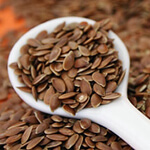
It’s a well-known fact that the more colorful a vegetable is, the more healthy it’s likely to be. After all, color indicates the presence of carotenoids, which are the antioxidants that give most vegetables their greatest benefits. Consequently, many of us assume that bland-looking vegetables, such as regular white cauliflower, are lacking in the health department. Sadly, it is true that cauliflower lacks certain nutrients, such as chlorophyll, that are present in most other vegetables…










